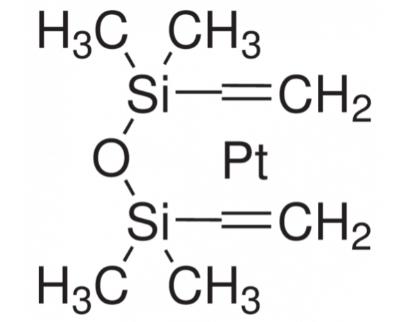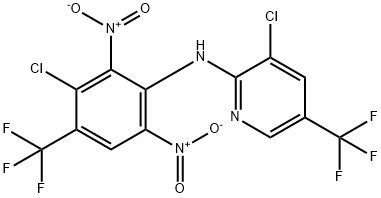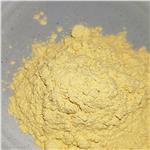Fluazinam---Heterocyclic Fungicide
Dec 21,2021
Fluazinam is a heterocyclic fungicide. The original drug is yellow crystals with a melting point of 115-117°C. Protective fungicide, effective against Alternaria, Botrytis (especially those resistant to benzimidazole and dicarboximides), Phytophthora, Monoaxial mold, Sclerotinia sclerotiorum, Venturia . It is not systemic and has no therapeutic effect, but it is very resistant to rain erosion and has a long residual effect. It is a good foliar spray and can also treat spider mites.

Fluazinam is a low-toxicity fungicide of 2,6-dinitroaniline developed by Japan Ishihara Co., Ltd. It is effective against Alternaria, Botrytis, plant-eating mites and cruciferous plant root swelling. It has a good preventive effect and is often used to control pepper blight, potato and tomato late blight. Studies have shown that exposure to residual fluazinam can cause asthma and dermatitis and other diseases that destroy the human immune system. There are few studies on the environmental behavior of fluazinam.
Application
In recent years, a large number of studies have shown that fluazinam has a variety of different effects. On the one hand, it has a good control effect on a variety of pathogens. It is often used to control tomato late blight, pepper blight and potato blight. Fluazinam has two different dosage forms: Suspending Concentrate (SC) (50%W/W) and Wettable Powder (Wp) (0.5%w/w).
Japan has conducted in-depth research on the production and use of fluazinam suspension, and through certain development, fluazinam suspension is mainly used for disease and wax insect control. A certain concentration of fluazinam can better inhibit the growth of Phytophthora capsici under certain conditions; a large number of experimental studies have found that different proportions of fluazinam have different effects, and different concentrations of fluazinam are used in different periods It can produce different positive effects on potato emergence rate, production yield, disease prevention and other aspects. For example, 300 times the concentration of fluazinam can significantly increase the vitamin C content of tubers. 1000 times liquid has the best disease prevention effect. 100 mL of 50% fluazinam suspension can have a good control effect on potato late blight; fluazinam has a strong effect on inhibiting the mycelial growth of Botrytis cinerea on its multi-drug resistant strains. Fluazinam and boscalid can significantly improve the control effect of Botrytis cinerea under certain conditions, but an improper compounding ratio of the two substances will reduce the control effect of the disease.
Pharmacological
Fluazinam inhibits all stages of the infection process by inhibiting spore germination, hyphal breakthrough, growth and sporulation. Fluazinam (SHIRLAN, IKF-1216) was first researched and developed by Ishihara Zushikai in Japan and has been further developed. According to the analysis of characteristics, it belongs to a low-toxicity fungicide of 2,6-dinitroaniline. At the same time, it also has good protection performance. And fluazinam also has a broad-spectrum antibacterial activity, which is caused by pathogens such as Alternaria, Botrytis, Phytophthora, Monoaxa and Sclerotinia sclerotiorum. The disease has a good control effect, especially in the control of gray mold is widely used. Fluazinam has many advantages, especially in terms of rain resistance, and its water resistance has a longer protection period, and it has a better control of phytophagous mites. It has been found through research that it has a certain degree of protection. The research on the bactericidal effect of fluazinam started in 1982. Experimental studies have shown that fluazinam is more effective in preventing and treating various diseases of fruit trees, wheat, vegetables, soybeans, potatoes and tea in the field. good.
Toxicity
Fluazinam is low toxic to mammals and most terrestrial organisms such as birds, bees, and earthworms, but highly toxic to fish. Fluazinam is moderately irritating to the skin and eyes, and may cause increased sensitivity after contact with the skin.
- Related articles
- Related Qustion
- Fluazinam: A Highly Effective Fungicide with Advantages and Toxicological Risks Feb 1, 2024
Fluazinam is a highly effective, sustainable fungicide with favorable environmental properties and good crop tolerance, but can be toxic to humans and animals.
- Fluazinam: mechanism of action, applications and safety Sep 20, 2023
Fluazinam is a versatile and safe fungicide that effectively controls fungal diseases in crops. Its unique mode of action reduces the risk of resistance development.
Dopamine and norepinephrine are in the monoamine class. Catecholamines are synthesized in the brain, the adrenal medulla, and by some sympathetic nerve fibers. The biosynthesis of catecholamines begins with the hydroxylation of tyrosine by....
Dec 21,2021APIKarstedt catalysts promote a quick, low temperature curing of the hydrosilylation reaction. They form silicone elastomers through an addition curing cross-linking reaction between Si-vinyl and Si-H groups.....
Dec 21,2021Catalyst and Auxiliary








